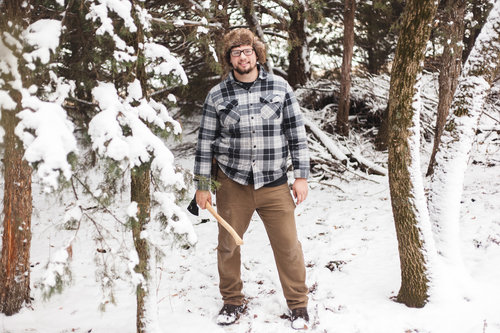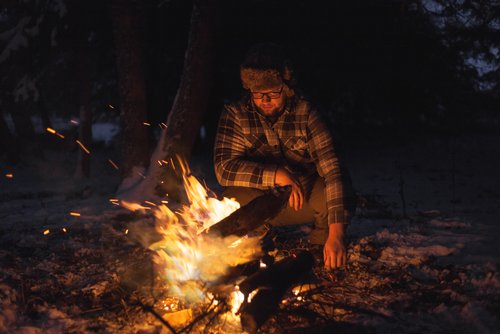Bushcaft. Have you heard the term? If run in outdoor circles like I do you probably have. Do you know what it means?
It was brought to my attention recently, and I did not have a good explanation of its definition.
So, I turned to Nebraskan Sam Larson, who is a renown, well-traveled Bushcraft (there’s that word again) Instructor and Wilderness Skills Expert and winner of the popular TV show survival challenge ALONE – Mongolia on the HISTORY Channel.

He had this to say about the word “Bushcraft” and what it means.
“It doesn’t involve turning landscape shrubbery into Mickey Mouse ears,” quipped Larson.
“Bushcraft is when we take a step closer to nature. Bushcraft is not just observing nature, but participating in it and living off the land. Bushcraft is the appreciation and human celebration of the natural world, in its purest, ancestral form,” said Larson. “And it is rising in popularity as more people want to get beyond regular camping.”

Is bushcraft the same as wilderness survival? Larson explained wilderness or outdoor survival methods are about adapting to unexpected emergency situations to keep yourself alive and get to the safety of civilization. Bushcraft is different. He said it is about using nature to sustain yourself for protracted periods of time in the wild with minimal gear, often on a voluntarily basis. Although, he added, bushcraft skills can sure be put to use in a survival situation.
So why was bushcraft so important for you to know? “Don’t get me wrong,” said Larson, “I love climbing hills and mountains, navigating forests, and paddling rivers … but I wanted to interact with the wilderness in a more in-depth way. I wanted to understand the trees, not just walk around them. I wanted to know the edible and medicinal plants. I wanted to understand what the weather meant, and why it did what it did. I wanted to be able to carve a life out of the wilderness, in a sustainable way.”
How about giving some examples of bushcraft skills? “Creating fire with sticks, building shelters with trees and earth, eating “weeds,” making cord out of inner bark, and understanding wildlife. At least, that’s a good start,” he pointed out.
Is one bushcraft skill more important to learn than the others, and what’s the best way to acquire bushcraft skills? Bushcraft instructors like Larson say the most important bushcraft skill to learn is fire-lighting. Begin there, they’ll tell you. Pick up the basics by taking a hands-on bushcraft course, and then build on the empirical knowledge you gain there.

What are the essential tools for bushcraft? These would include items such as a knife or blade, knife sharpener, hand axe or hatchet, saw, compass and fire-striker. Other baseline items may include a metal container, roll of multi-purpose cord and tarp. “Although I’m not a purist when it comes to primitive skills,” noted Larson. “I don’t want to solely do things “to” nature. I want to do more “with” the natural world than simply climb over its back. I want to know it deeper and rely on it with more basic things, rather than high-tech, heavily manufactured equipment.”

What is the purpose of bushcraft? Bushcraft skills provide for the core physiological necessities of human life: Food (through foraging, tracking, hunting, trapping, fishing), water sourcing and purification, shelter-building, and firecraft.
“Going into the woods is the best thing that I’ve ever done. My experiences in nature have taught me how to be self reliant in the forest, but they’ve also taught me how to love deeper, think clearer, and slow down to enjoy the small things.” — Sam Larson, Bushcraft Instructor and Wilderness Survival Expert.

*NOTE: In Nebraska, bushcraft will need to be done on private property with landowner permission. Inform the landowner what you intend to do and then ask them to provide you with all their personal rules or guidelines. Anything that pertains to the ‘attempt to take’ or harvest of wild animals or fish, laws and regulations must be checked through the Nebraska Game and Parks Commission.

The post Bushcraft appeared first on Nebraskaland Magazine.
















